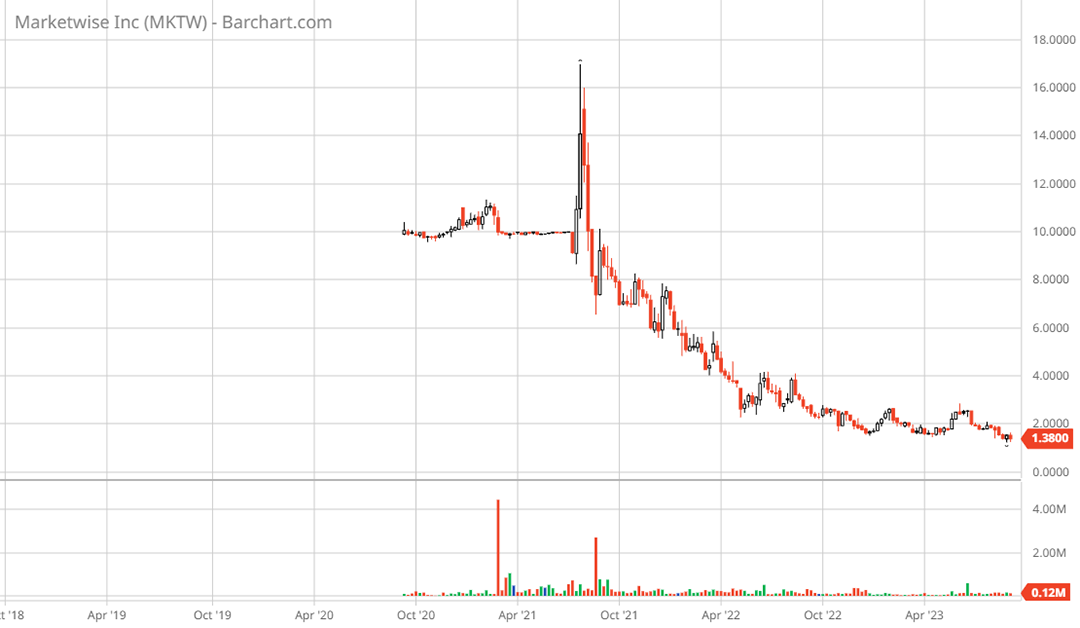As part of constructing the stoxdox, Inc. case study in response to the brand challenge in front of the US Patent and Trademark Office, I conducted a cursory review of MarketWise (NASDAQ:MKTW). MarketWise is a direct competitor of stoxdox in providing research, information, news, and journalism to the general population. We each cover the global financial markets and related subject matter.
MarketWise
Many readers may be familiar with MarketWise’s flagship brand, Stansberry Research, as a result of its internet presence. The following quote from MarketWise’s 8-K filed with the SEC on July, 8 2021, upon consummation of its SPAC IPO opportunity, is how the company describes itself:
Founded with a mission to level the playing field for self-directed investors, today MarketWise is a leading multi-brand subscription services platform providing premium financial research, software, education, and tools for investors.
Although unfamiliar with MarketWise’s research, the Stansberry Research brand appears to have gained its audience via what professionals might consider to be clickbait. The following quote from Wikipedia supports the clickbait interpretation:
Stansberry advertising and social media messages often contain highly inflammatory and alarmist messages warning of impending financial disaster, with an extreme anti-government stance.
MarketWise went public via a SPAC during the “blank check” period or SPAC bubble. MarketWise’s valuation appears to have peaked near $5 billion between July and August of 2021. The shares have since collapsed as can be seen in the following 5-year weekly chart.
Clickbait aside, as the economics and valuation of a successful subscription business model can be SaaS-like, I decided to take a look at MarketWise’s financials. The following quotes can be found under “Evaluation of Disclosure Controls and Procedures” in MarketWise’s 2022 annual report filed with the SEC (emphasis added):
As previously reported, in connection with the audit of our consolidated financial statements for the year ended December 31, 2020, our management and auditors determined that material weaknesses existed in our internal control over financial reporting related to: (i) a lack of contemporaneous documentation and account reconciliation, and (ii) the lack of a formal or documented risk assessment process.
Based on our evaluation, and as a result of the material weaknesses described above, our principal executive officer and principal financial officer concluded that, as of December 31, 2022, our disclosure controls and procedures were not effective.
Upon reading this disclosure, which was conveniently identified and linked to within the table of contents of MarketWise’s 2022 annual report filed with the SEC, I decided to go no further as this was a major red flag.
Internal Controls
In the case of MarketWise, given the aforementioned clickbait impression, I was on alert for oddities and quickly discovered the lack of internal controls after reviewing the table of contents of its 2022 10-K. The two defects combined, in addition to insider control, render MarketWise uninvestable from my professional perspective.
Summary
In most instances one is not on guard when reviewing companies, and thereby it is easy to miss the obvious red flags, as was the case with MarketWise. It is wise to make a habit of looking for any adverse internal control disclosures at the outset of an inquiry, prior to expending valuable time and effort.


